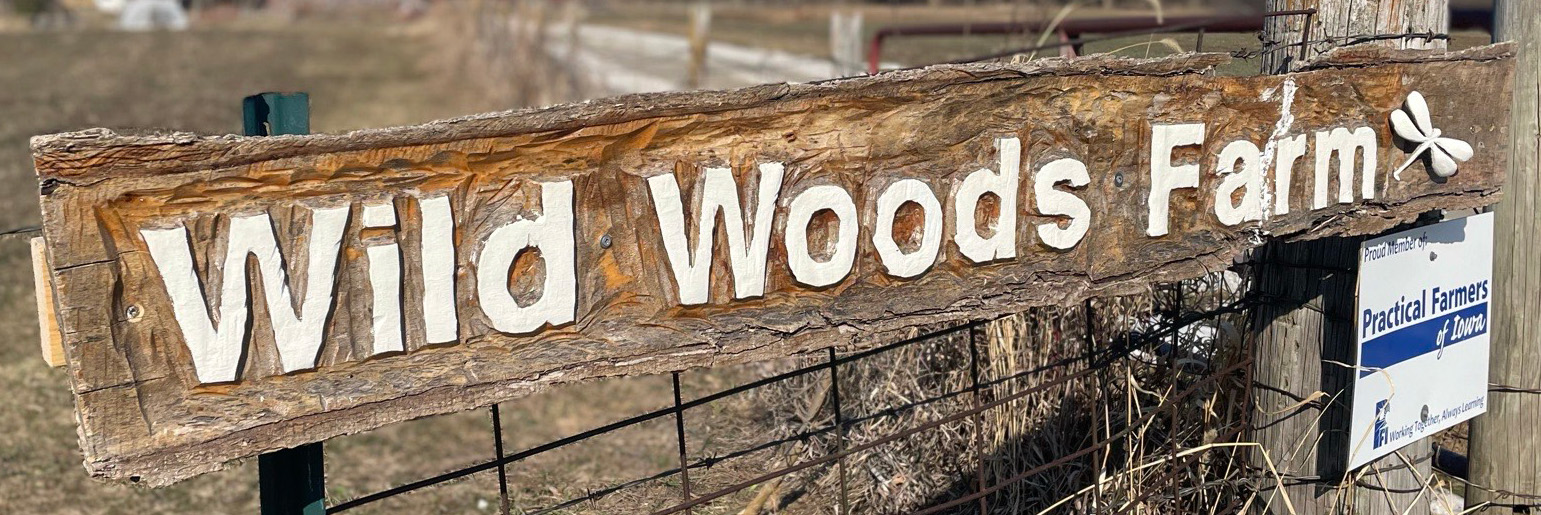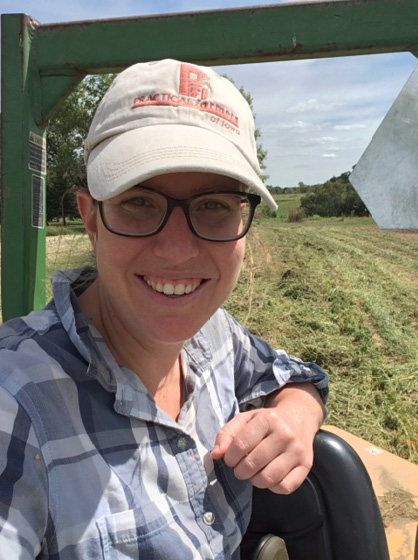I was covered in dirt from the field, wearing an old pair of shorts and a tank top, and I smelled like a mixture of dirt, sweat, and onions. It was a vegetable delivery day in July, and we had just run out of potato sacks. Looking for more bags, I drove my old gray pickup to town and walked through the sliding doors of our local grocery store. The cold air enveloped my sweaty body, hydrocooling me, causing me to shiver. I looked past the entry way to the produce section and saw an old neighbor who lived across the road from the first farm I had rented. He was holding an onion and examining it intently. I was a little embarrassed to be seen in field clothes and was in a hurry to get brown paper bags, a few aisles away.
My old neighbor lived on a 16-acre, 100-year-old farmstead, beautifully preserved, but no longer used for farming. He traveled a lot for his job, and his land and home stood empty the majority of the time. I had asked him a few times, years before, if he would sell me his land. I didn’t even know if I could afford it, so I inquired in a half-joking yet wishfully serious way. But his answer had always been no. I still dreamed of owning land someday, but finding land appropriately priced and sized was difficult. Land access is a perennial issue for farmers, one that has been a defining part of my life. By this time, I had been farming for nine years and was now on my second rental property. I was debating if I should stop and speak with him. I hadn’t seen him in four years, but then I heard his booming jovial voice from across the store.
“Kate! Haven’t seen you in forever!” He grinned at me with a boy-like, endearing smile.
“You should buy my farm,” he added, a little extra spark in his eyes.
He was in his early 40’s and wore a cut-off t-shirt and jeans so ripped through with holes that they scarcely resembled their original form. The loudspeaker in the rafters above us boomed, “Checker to aisle five for price-check.” Square cardboard boxes mounded high with potatoes, bananas, tomatoes, garlic, squash, and sweet potatoes surrounded us. A cooler case full of greens and cucurbits and pre-cut vegetables faced us on the wall. With all this available food, I was reminded that convenience was everywhere. I really didn’t have time to chat, but I walked closer.
“So, you’ve finally decided to sell your place?” I asked.
“Yeah, my parents are getting older so I’m moving back home to be with them,” he replied.

The blast of air-conditioning gave my tired body a boost of confidence. “How much are you asking?”
He shifted back and forth with anxious energy, rhythmically moving side to side. He named a figure for his farm.
“Too high for me.” I said, and jokingly gave him a ridiculously lowball counteroffer.
He chuckled at my response. His shaggy, jet-black woodsman beard set off the twinkle in his eye. He grabbed an onion from beside him and tossed it in the air a few inches. I left the store and hurried back to the farm to finish preparing for the vegetable delivery. The importance of the moment eluded me at the time, but soon, it would prove to be life changing.
Ten years before this, walking one day to my engineering job from my apartment just outside the Twin Cities, I realized I’d rather be walking to a barn than to an office. Both my parents grew up on farms but, because of the 1980’s farm crisis that swept through the Midwest, they weren’t able to farm in their adult lives. Despite knowing the challenges involved, I made what felt like a radical decision to change my career and pursue my passion.
I called my Grandma right after I decided to leave my job. A familiar voice said, “He-llo.”
I knew Grandma was sitting in her mauve, rolling chair at the kitchen table, looking out over her farm, the fields and big hill at the top covered in a blanket of snow. She had short, curly brown hair, quarterly permed at the beauty parlor, and weekly re-rolled in curlers at home. Not a wisp of gray hair was noticeable, though she was well into her 70’s. She was a strong-but-short woman, her back slightly bent from years of farm work.
I cared a lot about my grandparents and was worried about their disapproval. I knew how hard farm life had been for them. I knew she’d be disappointed with my decision, but I was determined to tell her anyway. After talking about the weather—it was snowing in Minnesota, icy in Iowa. I finally worked up my nerve and told her the real reason I was calling.
“I am going to leave my engineering job. I want to farm.” I nervously announced.
She was silent. And after a breath, she spoke.
“Katherine, are you sure? You’ll never make the money farming you can make now.” Her voice came through in a static, echoey tone, indicating she’d placed me on the speaker phone. I knew she’d be looking over to Grandpa for assurance. He’d be telling her with his eyes, “Now, Ma, it’s all right. It’s her life.” Quietly, in a disappointed and resolute tone, Grandma replied to me.
“We farmed so our children and grandchildren didn’t have to.”
Farming is an incredibly hard life. Many people, including my Grandma, believed their children deserved better. In 1935, a year before my grandmother was born, there were 6.8 million farms in the United States. But by the early 1950’s, when she started farming, the number decreased to 5.3 million. Ten years later- when my mother was five years old, it continued to dwindle to 3.7 million farms. And when I started farming in 2010, there were only 2.1 million farms. The US continues to lose farmers, and in 2022, there were only 2 million farms left. Fewer farms, means fewer farmers and I wanted to help change that trend.
Growing up, I lived with my parents in the suburbs, but spent every moment I could during my childhood summers at my Grandparents’ farm. Almost twenty years before this conversation, I had sat in the passenger seat of the farm truck we called Old Red and worn bib overalls to match my grandpa’s. Didn’t she realize, it was because of her and Grandpa that I wanted to farm?
Two months after I called Grandma, I went to the office for the last day. And just under a year later I had found a place to farm. I rented a hayfield from a family friend near Iowa City. At 24 years old, in the fall of 2010, I shook hands with my first landlord and went from a young professional thinking about career advancement to a farmer wondering if I knew enough to grow food.

My newly rented field was nestled between a manicured lawn next to an event barn and a grand driveway, a gravel road, and a large, wooded area. I stood at the edge of the field on my first day on the farm and traced the outline of the potential plot with my gaze. Then, I walked the perimeter, counting my steps to calculate its size—one acre. I envisioned plowing up the rich green grass, turning it over and finding fertile soil underneath. With a nod to the woods that stood on the edge of my field, I named my farm Wild Woods Farm.
I grew 30 different types of vegetables my first year. I didn’t know what I was doing, but I sought advice from established farmers. I fed 11 families through my Community Supported Agriculture (CSA) initiative and had a stall at the local farmer’s market. I grew vegetables because I couldn’t afford to grow corn. I couldn’t compete with the low profit margins and high land investments of Iowa’s current traditional crops: corn and soybeans. I planted potatoes, trellised tomatoes, dug carrots, and completed a zillion other tasks to keep the small farm running. It was a lot of work, more than I thought it would be.
I was a tenant farmer with dreams of owning my own place—like my grandparents. They were tenant farmers for 15 years before they purchased a farm.
On this first rental farm, I operated with a year-to-year informal handshake agreement. My family friend, and now first landlord, also grew up on a farm and he delighted in having crops grown on his land. He connected me with the local-business community and built a deer fence around my field. His wife made delicious food from the produce, and for the first two years of the farm they let me live with them. I eventually found an apartment in town, commuting to the farm instead.
I learned a lot from trial and error, but more importantly I became involved in the local farming community and found a mentor who taught me how to grow better vegetables and grow the CSA membership.
In my fifth year of farming, we wrote and signed a one-year written lease. I was farming three acres and feeding over 150 families through a weekly veggie subscription.
I was trying to be proactive about longer-term land access, but in July of 2015, sixth months into our written lease period, my landlord came by the packing shed where I was working on bagging vegetables, and nonchalantly asked,
“Do you have a minute for a chat?”
We sat down at a white picnic table behind the barn.
“This isn’t working Kate. I need you to be done farming here by the end of the year.” he said.
I looked at him stone faced, not twitching, but internally gasping for air. My thoughts raced. Wasn’t he just a few months before talking to me about selling me land? What had I missed? What had happened?
“Is there anything I can say to change your mind?” I asked.
“No, my decision is final.” He replied.
Suddenly, it felt hotter than the 85-degree temperature. I had known this man almost my entire life. I had learned to skate on the pond below where we sat. His wife was always so kind to me. I had learned so much from them both. What had I missed?
I wanted to fight but froze.
After the longest awkward silence of my life, he turned and left without another word. Flight took over and I stood up from the picnic table, walked over to the new pack shed he had built for me to use, and conversed with one of my farm workers about the tasks that needed done that day.
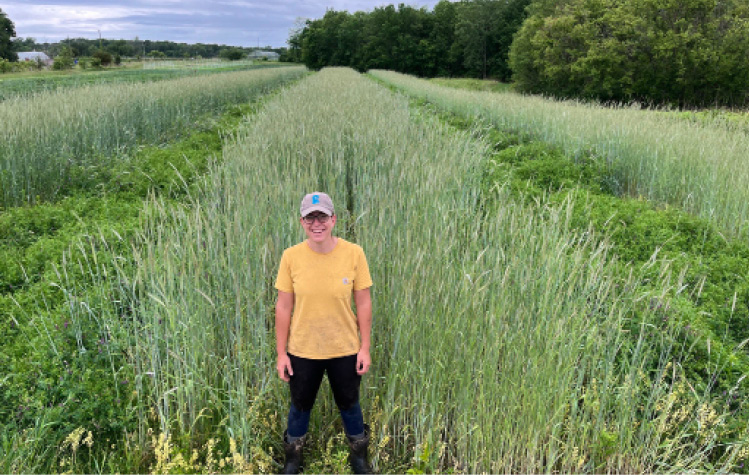
I had not left Iowa during the farming season in five years. I was so shocked that I hopped in my truck barefoot and drove to my parents’ place a few states away. They had recently moved to Ohio for my dad’s job. I was in Indiana before I even realized I didn’t have shoes on. I spent two days regrouping at my parents’ home and then drove back to the farm to face my future.
On my return trip home, my pickup truck began to shake. I heard a pop and smelled burning rubber. I swerved to the shoulder and realized my tire had blown. Two hours later, I found myself signing up for a Sam’s Club membership, the only tire store open on a Sunday.
As I waited for four new tires to be put on my truck so I could continue the trek home, I roamed the Sam’s Club. I felt culture shock walking the aisles of the temperature-controlled building. The farm had been my life, every waking minute paying attention to it: what my crops might need, thinking about irrigation, payroll, employee management, the effects of rain, cold, heat. I didn’t go into box stores often. I was overwhelmed with the pallet displays of fruit roll ups, socks, headphones and as Nancy Griffith says in one of my favorite songs, ``unnecessary plastic items." Yeast and caramelized sugar from the bakery mixed with savory smells from the rotisserie chicken display wafted through the air inside. Country music blared on the loudspeakers. The singer’s words rung with a nostalgia for farming, a life that always consisted of male farmers with ‘pretty little ladies’ to come home to.
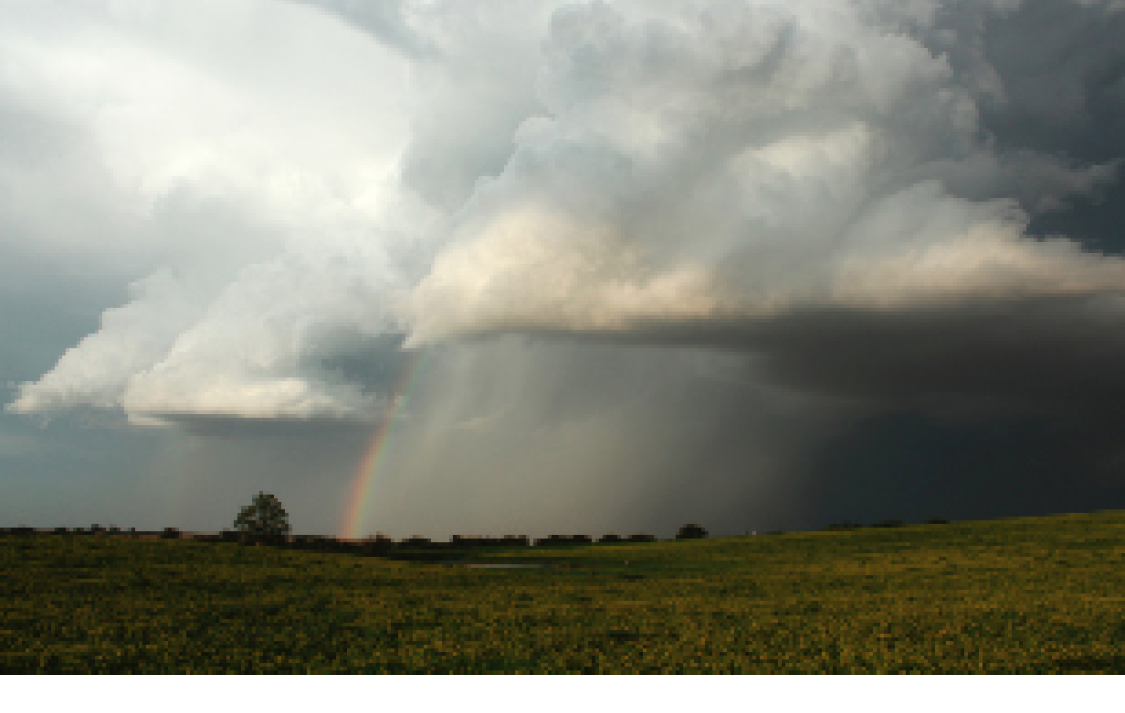
The reality of farming and the nostalgia for it are completely different. The singers crooned about fried chicken, mudding on backroads, and guys whose girlfriends thought their tractors were sexy. Meanwhile I wondered if I’d have a place to park my tractor by the end of the year. How would I find land? My garlic needed to be planted in just a few short months! I had built up my CSA to serve hundreds of families over the years. I felt immense pressure not to let them down.
I later learned that after I left my first rental farm, the land was rented to another grower. After another few years, the land was sold. Landowners often change their minds about wanting beginner farmers on their land. Small farming is labor intensive, smelly from manure applications, potentially weedy in a wet year, and takes a lot of people to succeed. But sometimes landowners don’t realize what it takes for a young farmer to succeed.
After returning, I spent the next month farming during the day and looking at every farm for sale in the area at night. I followed every lead on rental properties during the evening. We live in a hilly county with pricy land, and the farmers here have to compete with development prices. Vegetables don’t require a lot of land compared to row crops, but they do require flat land. Everything I looked at for sale was too hilly or too costly.
In August of 2015, a month after I received the news that my lease would be terminated by the end of the year, I stood in a convenience store on the edge of town. I was grabbing a snack after touring rental farms with a man who farmed lots of land around the area. Nothing we looked at would work. All he could find were small plots, which were basically big gardens. The larger fields were used for industrial row crop operations, and the homesteads were occupied by folks that worked in town. He was kind and offered what he could, but I needed more acres.
I walked the aisles of the small store looking for a snack that wasn’t too egregious. I settled on a pack of peanuts and a bottle of water but continued to browse to give myself time to think. All the land I looked at that afternoon wasn’t quite right, either too vulnerable to spray drift, had no water access, or was only available for a short-term lease. I was stuck again. It was late summer, and time was running out. I’d already come to realize that I couldn’t plant a garlic crop that fall. Another loss, five years of seed saving wasted.
I racked my brain as I looked at the rows of processed food, listened to the chatter of old men drinking coffee by the windows in the background. The smell of popcorn wafted through the air. Who else did I know who had land?
As I picked out a granola bar to add to my snacks, I realized I had one more option. I called an acquaintance who owned land nearby and asked if I could come talk with her. Amazingly, she said yes. Ten minutes later, we sat at a yellow picnic table next to her garden on the land she’d grown up on and recently purchased from her mother. The entrance to the land was off the main road, following a short makeshift driveway of wood chips. White electrified netting surrounded her garden, protecting it from deer. North of the garden, a small section of trees hid a nearby subdivision of land. To the west was a large field of alfalfa bordered by trees.
As we sat on the yellow wood, she offered her land to me. She offered me hope. She assured me we’d create a lease quickly enough so I could plant the garlic I’d been thinking I’d lose. I looked around, the land was full of green, luscious fields, surrounded by mature woods with tall, dense verdant canopies. A perfect place for Wild Woods Farm, I thought to myself. Most of the farms I visited earlier in the day didn’t even have a tree in sight. It was an unusually pleasant summer day, my tired shoulders relaxed, maybe there would be a solution after all.
Beginner farmers often don’t get everything they need in a lease, either because they don’t know what they need or because they’re scared of losing access, even if these things are required for success. Sometimes, if a farmer asks for what they need after the lease begins, they can lose long term access. But the lessons I learned from my first farm emboldened me.
So, I told her, “there are a few things I need in order to rent this land. I need fencing, water, barn space and ideally, a place to live.” There were no structures on the site, no water access, and no substantial fencing. I knew my request was a tall order.

We met every week until October, talking through what I would need. By fall, we decided that I would take out a loan to construct a building on the property and the landowners would buy the building back from me at the end of a five-year lease term. And to cut my expenses, I would build an apartment into the building. Owning it would help me build equity, so that in five years I could hopefully buy a farm. She agreed to pay for a water well and hydrants, and to provide some fencing, for an additional fee added on to the rent. Three months after I first approached her, we had a lease signed. I finally had a place to farm again! It was bare ground with nothing on it but a promise that together, we would rebuild a farm.
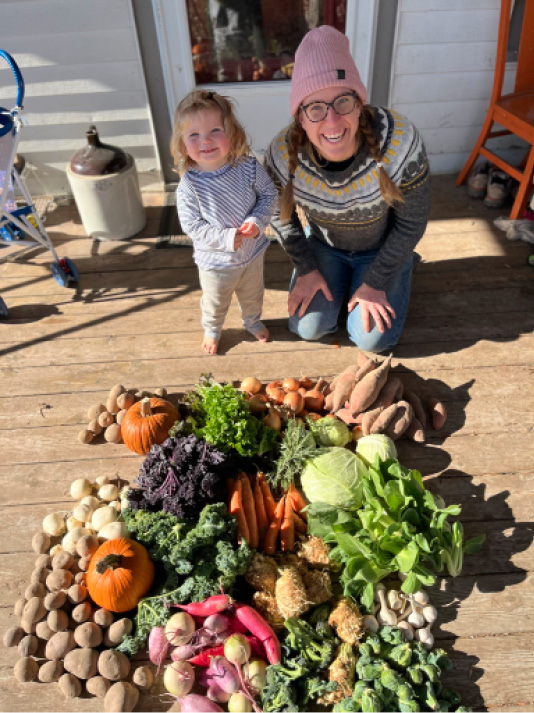
In November of 2015, I sat in the field of alfalfa on my new rental farm, its green tendrils soft against my skin. It overlooked the pole barn building site, and seeing it all filled me with a sense of calm. It was the place of my future home, machine shed, and pack shed, in one carefully designed, rectangular red barn. The blue sky enveloped me. I felt reconnected to my passion. It was a healing moment. My dreams renewed, confidence restored, and my ambition restarted. Pop. Pop. Pop. The sound of the construction workers swiftly attaching boards together with their air-driven nail guns. Like children with tinker toys, their shouts volleyed back and forth, some good-natured teasing, and others, instructions for the next job.
I sat back on the hill to think and watch the building crew for a while longer. I knew the ground I sat on was Kickapoo, Sac and Fox, Ioway, and Sioux land. No one really owns the land, I thought, we are all but temporary caretakers.
I was investing extensive labor on rental farms, building infrastructure, and improving soil health. In the long term, I knew I needed to buy land so I could have stable land access. But at the time, I couldn’t find a farm to buy. At least this second rental farm was a solution that moved me forward.
Farming as a tenant involves a lot of emotional labor. No matter how wonderful a landlord is, there is always a power dynamic. The fear of losing land access looms over the relationship, and a farmer longs to have secure tenancy on the land they tend and have come to love so much. But at the end of the day, it’s still someone else’s land. Even if you can find a farm to purchase, you still have to make it work economically. Farming requires long hours, little time off, and is one of the lowest paying jobs.
At the end of my eighth year of farming alone, I got married. Derek, my husband, was not a farmer, but I enjoyed teaching him to drive a tractor and he’d help me occasionally on nights and weekends. He moved into my barn apartment and was only mildly shocked by the furnace room full of sweet potatoes, the living room filled with winter squash, and the garage area filled with onions. My operation was quickly outgrowing the rental property. We needed to buy a farm.
It felt impossible. I had already been looking on my own before Derek and I got together. Now that we were married and knew we wanted to have kids, the stakes felt even higher. We wanted to find a place we could make our forever home. The equity that I had built in the barn would help us with a down payment. But we still had a small budget compared to the casual homesteaders with town jobs and the developers encroaching on our area.
In the summer of 2019, Derek and I looked at every single farm that came up for sale in our area, a full-time project after the farm work was done. It was a long journey of looking at farms that were either too big, too small, too old, too expensive, or with soil too poor to grow vegetables. I searched everywhere—land sites online, rural grocery store bulletin boards, auctions, realtors—and talked to everyone I knew. I hunted within a 30-mile radius of my market, scouring ads in three counties. We looked at a farmhouse with cinder blocks and old chains in the basement, smoke so thick on the walls of the house, it would have to be peeled off. I considered the property, but it came with more land than I could afford. Another farmhouse had been overrun by various animals that used to be pets, something I could potentially deal with, but it came with too little land—not enough to make a living with vegetables. Then, there were the farms with the fields that were too hilly, too rocky, too sandy, or too expensive.
I searched for funding options and determined the USDA Direct Farm Loans would be my best option for purchasing a farm. I asked my loan officer if I could purchase an open field and build a house and barns but was told the program was only set up for purchasing land with existing infrastructure. Yet, all the farm infrastructure we found was aging, some even falling apart.
One evening, two months after the impromptu meeting in the produce department with my old neighbor in the grocery store, my husband and I had just finished looking at yet another farm that didn’t fit our needs. Like many others, this one was not going to work. It only had five acres of land, not enough to make a living on, and a house too expensive for us. Fancy acreage, more suited to a nonfarmer.
Derek said, “Isn’t your old neighbor’s farm near here? The one who tried to sell it to you in the grocery store?”
I replied, “Yes, it is, just over that way a mile. But it’s too expensive; my loan officer would never go for it.”
“Let’s just drive by,” Derek replied.
We drove our red pickup truck slowly down the gravel lane in front of the farm. The setting sun basked the 100-year-old farmstead in a golden hue. The farm was a small, only 16 acres—all that was left of the 160-acre farm platted in the 1800’s. The infrastructure was well-kept, having been owned for 30 years by non-farmers who had money to keep up the house and buildings. It was admittedly smaller than ideal, but on the way home I looked up the soil maps on my phone and determined the soil was better than the land I was renting. Through careful crop planning and building soil health, I determined I could make it work.
The farm was not listed with a realtor but was for sale “by owner.” I called my old neighbor, and he was eager to talk. We set up a time to see the place, and one evening a few days later Derek and I drove over to the farm to discuss the property with him.
We parked between a 100-year-old haymow-barn and a newer, red-pole building. We walked the circle drive towards the house, passing a century-old granary on our left.
I thought about the many uses of the buildings. The granary would have held oats during the Great Depression but some time in the past twenty years it had been retrofitted to be a chicken coop. Currently, no feathers remained, and it now served as a dog kennel. The progression of the farming world, summed up in one building.
We approached the house, a tall two-story structure, with a gabled, red metal roof. The house was painted white with intricate red trim. We stepped up on the porch, a large, covered area with wide floorboards and a swing. I squeezed Derek’s hand and then knocked on the door.
The door opened.
“Kate, great to see you! Come inside.” My old neighbor said.
I introduced Derek and we toured the house, through the living room with diagonal wooden floorboards, past the woodstove in the parlor, and into the bright kitchen, sitting down at the table. Out of the south window, I saw my first rental farm across the road and momentarily relived the heartache of losing it.
Eventually, we began to negotiate. He was delighted to possibly be selling his place to a farmer, since all the other prospective buyers had been developers. Negotiations began and in classic rural fashion, my old neighbor looked at my husband instead of me, despite having just met him.
Derek, who worked at a job in town, redirected his look back to me. “She’s the farmer,” he said. When we left, we had the beginnings of a deal.
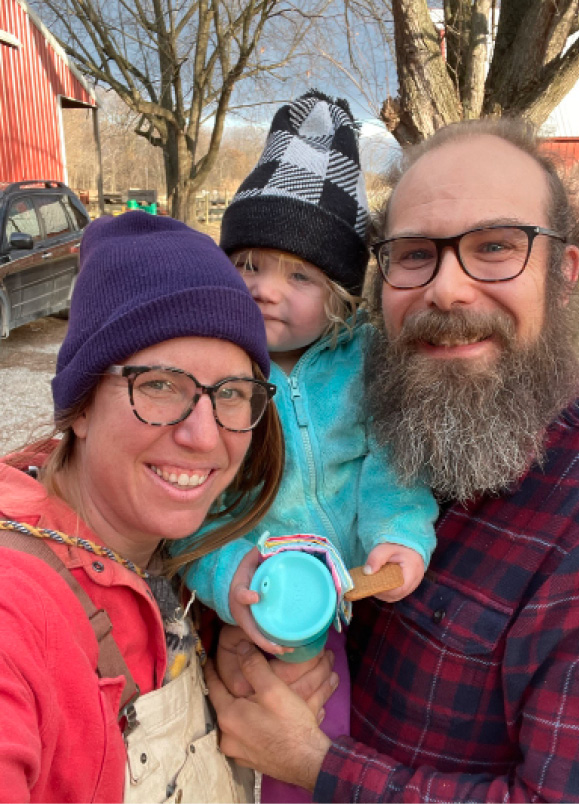
Kate Edwards, husband Derek, and their daughter
I called my USDA Loan Officer later that week while weeding fall cabbage. She was delighted I had found a potential farm to purchase. But the budget she set for me was $100,000 less than the listing price of the farm.
It was difficult, but I negotiated a lower price for the farm and a higher loan amount. And in September of 2019, on our first wedding anniversary, a month after we sat at the kitchen table negotiating, Derek and I electronically signed a purchase agreement for the farm, in the field, on my phone. We were on a break from digging potatoes in some ground I’d recently expanded to, on a neighboring farm. A year later, that potato field became a housing development.
The story of land access is an ancient one. We stand in the gap between the indigenous peoples—the original famers who cared for this land—the early settlers who cleared it for agriculture, and the developers encroaching on our area.
Today, after two tenant farms, I finally own the ground that I cultivate. I also rent a few acres from a neighbor. Last summer, we fed over 300 families through our CSA. Derek and I have a two-year-old. She learned to walk on the hardwood floors of our 100-year-old house, and now she runs out the door to the farm with me each morning. Grandpa passed away a few years ago, but I knew how proud he was of me before he died, another generation farming. I miss him every day. He would have delighted in watching my daughter in her pin-striped blue overalls just like he wore. My Grandma comes to play with our little farm girl while I work in the field. She gets it now, I think. Although, she still believes I don’t make enough money to work this hard.
Land access continues to be part of my story, a journey that has challenged me mentally and physically, but I stand in the center of my passion. And I get to share that joy with my husband and my daughter. For now, we farm this ground and grow food for our community, one harvest at time.

